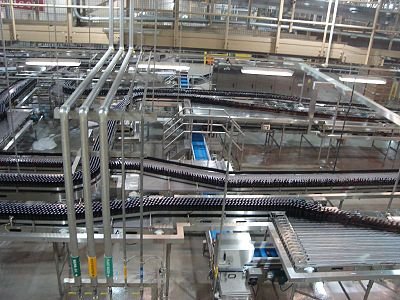Packaging Technology - Pharmaceuticals Chapter 2
Packaging Technology
Temperature
Extreme conditions may cause deterioration, low temperature leading to aqueous solutions freezing & hence, to fracture of containers. High temperatures increase diffusion coefficients, accelerating the entry of water vapour into hygroscopic products & the loss of volatile components. In addition, high temperatures increase reaction rates, so that breakdowns such as hydrolysis or oxidation are encouraged.
Pressure
Decrease in pressure, as in mountainous region or during flight in non-pressurized transport aircraft, may cause thin containers to burst or strip packs to inflate.
Moisture
Although liquid moisture may cause obvious damage, water vapour may penetrate into a package, leading to hydrolysis, without visual changes. It is essential to check the water vapour permeability of materials to be used for packaging moisture-sensitive products; for example, plastics show considerable variation in this property.
Gases
Gases from the atmosphere may diffuse into the package, leading to deterioration. Thus, oxygen will encourage oxidation, while carbon dioxide will precipitate barbiturates from solutions of their sodium salts.
Light
A number of deteriorations are due to photochemical reactions particularly affected by the ultra-violet band of the spectrum. Protection may be given by using ultraviolet absorbing materials for the package. Alternatively, an opaque outer package may be used, with a warning that the inner package should be protected from light; this has the advantage that the latter may be transparent, permitting the contents to be inspected.
Infestation
Packaging materials, particularly those of a cellulosic nature, are liable to attack by various living organisms, from rodents to bacteria. Molds, in particular, may grow on paper or board in the presence of moisture.

Refference - https://en.wikipedia.org/wiki/Packaging_and_labeling#/media/File:Budweiser_Plant.jpg
Contamination
The outside of containers is likely to become dirty during transport or storage; although unlikely to affect the contents, it detracts from the appearance, & can easily be prevented by outer wrappers. Plastics are particularly subject to this, due to electrostatic charges that attract dust.
Greater importance is that the product may become contaminated by the odor of packaging materials, printing inks, or of foreign materials, which may permeate through the package. Again, plastics may show unexpected permeabilities in this respect.
Package materials properties
To afford the necessary protection, the materials from which the container is to be made must show certain basic properties, which can be divided into four groups:
Mechanical properties
The material must give the container sufficient mechanical strength to withstand handling empty, when filling & when closing (all of this are often performed mechanically); processing (labeling, sterilization etc.), transport, storage & supply to & use by, the consumer.
Typical of the care in design needed in this respect are glass containers. The natural form of a blown glass vessel is pear-shaped, which gives a uniform layer of glass. Molding to other shapes affects the glass distribution, sharp angels giving weak points where the glass is thin and easily damaged. Thus, a glass container will have greatest strength if all corners are rounded.
Physical properties
The material should be impervious to any possible contaminants; for example, solids, liquids, gases, Vapors, or micro-organisms. The container must be able to withstand heat if the processing includes sterilization. The surface must be capable of clear labelling, often difficult, for example, with plastics. The package must have a suitable life; thus, rubber may present problems if it 'perishes'.
The material must protect from light, if necessary; that is, it must be ultra-violet absorbent. The container must not abstract substances from the product; e.g. absorption of Water from creams into cardboard boxes.
Chemical properties
The container and the closure should not react together, either alone or in the presence of the product. This can occur with certain combinations of dissimilar metals. The product should not react with the container or closure, as might happen if alkaline substances are packed in aluminum containers. Substances must not be abstracted from the product, such as the loss of bactericides from injection solutions to rubber. The container or closure must not yield substances to the product for example, alkali from glass or plasticizer from plastics.
Biological properties
The material of the container must be able to withstand attack by insects if this hazard is likely to be encountered. The package should not support mold growth. In both cases, the risk is greatest with cellulosic substances and, if the use of such materials is unavoidable, the attack may be minimized by impregnation.
Types of Package
Primary Packaging: Primary packaging are those packages which are in direct contact with the Pharmaceutical formulation. The main aim of primary package is to protect the formulation from environmental, chemical, mechanical and/or other hazards.
Secondary Packaging: The package external to Primary package is known as secondary package. This package provides additional protection during warehousing and also provide information about drug product for e.g Leaflets.
If you are interested in the biggest community about science, technology and mathematical things on steem blockchain, consider joining the 'steemSTEM' community. More details about steemSTEM can be found here.
#steemstem
Hello,
Your post has been manually curated by a @stem.curate curator.
We are dedicated to supporting great content, like yours on the STEMGeeks tribe.
If you like what we are doing, please show your support as well by following our Steem Auto curation trail.
Please join us on discord.
Congratulations @esha279! You have completed the following achievement on the Steem blockchain and have been rewarded with new badge(s) :
You can view your badges on your Steem Board and compare to others on the Steem Ranking
If you no longer want to receive notifications, reply to this comment with the word
STOPVote for @Steemitboard as a witness to get one more award and increased upvotes!